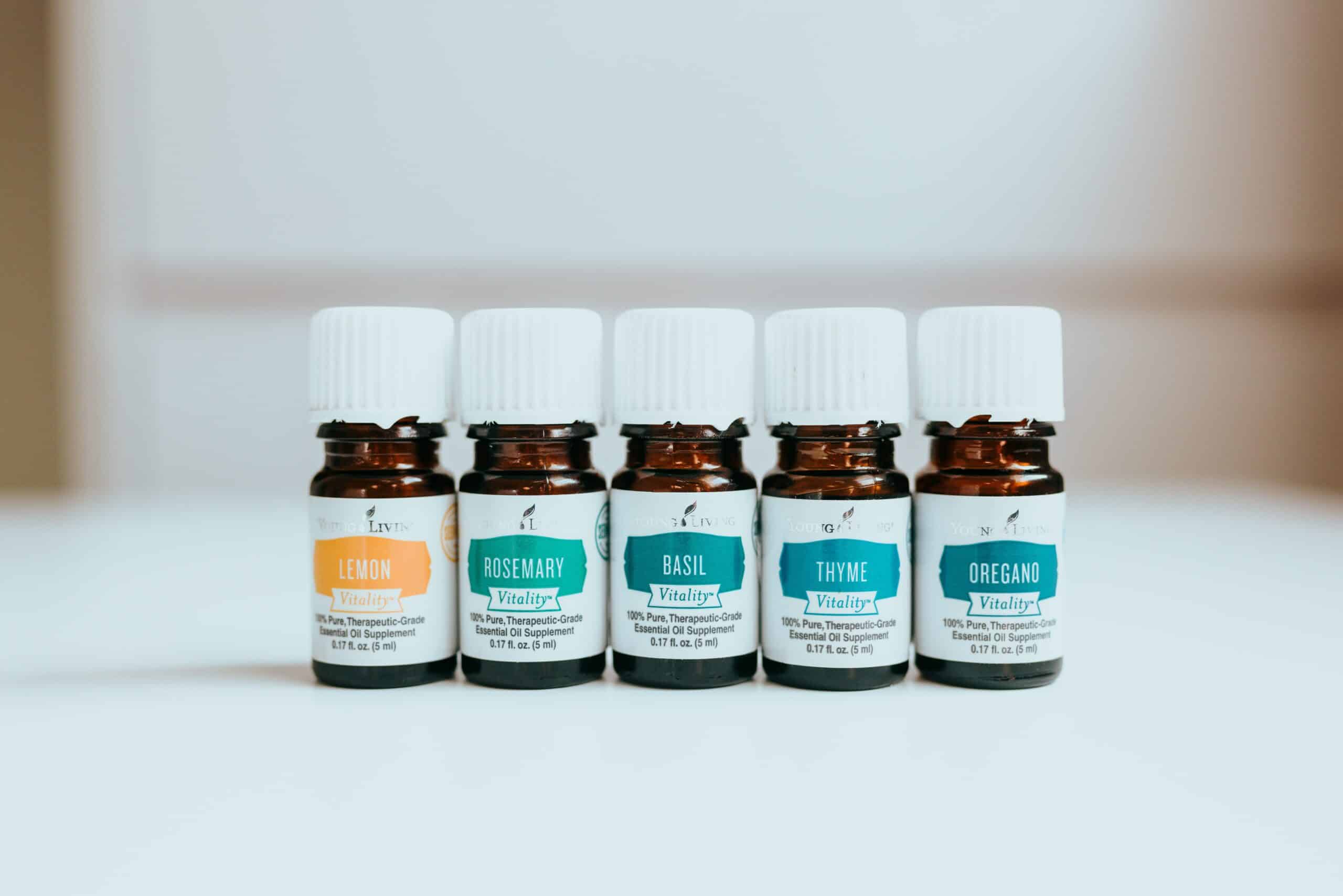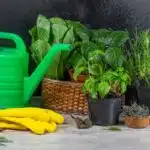Thyme is a powerful herb, both in flavor and in medicinal properties. It has been used for centuries to help us heal and enjoy life to the fullest. Growing and caring for thyme is both a simple and rewarding task, yet many are intimidated by it. But it doesn’t have to be! With just a little bit of knowledge, anyone can learn how to grow and care for thyme with ease.
The act of growing thyme is a juxtaposition of complex science and organic intuition. The careful balance between understanding the science behind soil chemistry and temperature ranges, while still honoring the innate wisdom of nature will lead to success in cultivating this aromatic herb.
Whether you are an experienced gardener or beginner looking to start your first herb garden, learning how to grow and care for thyme can be an enjoyable journey that will enrich your life with its fragrant aroma, lush foliage, and healing properties – all while providing an opportunity for personal growth.
What Is Thyme?
Thyme is an absolutely incredible herb! It’s like a super hero of the culinary world, boasting delicious flavor and wonderful aroma. Its unmistakable scent and taste have been enjoyed for centuries, enhancing dishes from all around the globe. But before we can enjoy thyme in our cooking or home remedies, we must first learn how to grow it.
Cultivating thyme isn’t difficult, but it does require a few steps. First off, let’s look at the environment in which thyme needs to thrive. Thyme loves well-draining soil with plenty of nutrients, as well as full sun or at least six hours of direct sunlight per day. It also prefers warm weather and will not tolerate frost or freezing temperatures, so if you live in an area with cold winters you’ll need to find an indoor location for your thyme plants.
So now that we know what kind of environment will keep our thyme happy, it’s time to pick out a spot where we can plant it! We’ll need to choose an area with room for growth – keeping in mind that some varieties can reach heights up to two feet tall – and make sure there won’t be any shade cast on our plants by nearby structures or trees. Once we’ve found the perfect spot, we’ll be ready to start growing!
Choosing A Location For Thyme
Location is everything when it comes to planting thyme! When selecting a spot for your thyme, you’ll want to pick the absolute best place possible – because once you do, there’s no turning back. It’s an absolutely essential step in ensuring that your thyme plants grow healthy and happy.
If you want your thyme to thrive, it’s important to find a location with full sun exposure. Thyme needs at least six hours of direct sunlight for optimal growth, so a south-facing spot with nothing blocking the light would be ideal. Keep in mind that if you live in an area with very hot summers, some partial shade is okay too.
Thyme also loves well-drained soil and prefers a slightly alkaline pH level of 6.5-7.5. If you’re unsure of the pH level in your garden soil, it’s always beneficial to test it before planting your herbs – this will help ensure they receive all the nutrients they need and avoid any nutrient deficiencies or other issues down the road.
Now that you’ve selected an ideal location for your thyme plantings, it’s time to prepare the ground for planting and get ready to enjoy the fragrant scent of fresh herbs!
Preparing The Soil For Planting
Believe it or not, your success in growing thyme all starts with the soil. Preparing the soil for planting is an important step – one that shouldn’t be overlooked. To ensure you have some of the best soil ready to cultivate thyme, here’s what you need to do:
First, test your soil pH levels and adjust if needed. You can pick up a soil testing kit at most garden centers or online. The ideal pH range for growing thyme is between 6 and 7.
Next, add compost or aged manure to your existing soil to increase nutrient content and improve drainage. This will give your young thyme plants a good head start in their new home. And finally, if your garden area has poor drainage, consider adding coarse sand or gravel to help fix the problem before you plant.
With these steps taken care of, you’re now ready for planting thyme in your garden – and that means being able to enjoy its unique flavor in all kinds of dishes from salads to roasted veggies! Here are just a few tips to keep in mind when planting: • Make sure each hole is approximately 4 inches wide by 8 inches deep • Space holes about 8-12 inches apart • Water thoroughly after planting
Planting Thyme
Now that you’ve prepped the soil, it’s time to start planting thyme! Planting thyme can be done in a variety of ways – from seed, plants, and cuttings. You need to make sure you choose the right type of thyme for your garden. There are many different varieties available, so it’s important to pick one that fits your needs. Different types of thyme have different growing requirements as well as different flavors and aromas.
If you’re starting from seed, the seeds should be sown directly into the soil about 1/4 inch deep and no more than 2 inches apart. Keep the soil moist until the seeds germinate, then thin out any overcrowded plants once they reach 3-4 inches tall. If you’re using plants or cuttings, dig a hole twice as large as the root ball, place it in the hole and fill it with soil up to the same height as where it was originally planted. Water thoroughly and mulch around each plant to help retain moisture.
Once planted, give your thyme plenty of sunlight and water on a regular basis – at least an inch a week during dry periods – to ensure healthy growth. Regular pruning will also help promote new growth while keeping your plants looking neat and tidy. With proper care, you can enjoy fresh thyme all year round!
Caring For Thyme
Taking care of thyme is like taking care of a beloved pet. It requires attention, patience, and love. But with the right methods, it can thrive in your garden for many years to come.
Just like any other plant, thyme needs regular watering to stay healthy and happy. Aim to water it once a week and make sure the soil remains moist but not soggy. The amount needed may vary depending on factors such as weather conditions and location. Additionally, if you live in an area with hot summers, consider adding mulch around the plants to help retain moisture and suppress weed growth.
Thyme also needs plenty of sunshine to grow well so try to place it in a spot that gets at least six hours of direct sunlight each day. If you’re growing thyme indoors, place it near a window that receives ample sunlight throughout the day. And while pruning isn’t necessary for most varieties, you should still remove dead or yellowing leaves occasionally to promote new growth and keep your thyme looking neat and tidy.
Caring for thyme isn’t difficult but having a bit of knowledge about its requirements will help ensure that it continues to flourish for many seasons ahead. With proper attention and love, your thyme won’t just survive—it will thrive!
Watering Thyme
Ah, the ancient art of watering thyme. A skill that has been passed down through the generations, and perfected by masters of the trade. But don’t be fooled – this is a practice that requires dedication and patience if it is to be successful.
So, what do you need to know? Well, firstly it’s important to remember that thyme will require regular watering during its growing season. However, it’s critical to make sure you don’t overwater this delicate herb as this can cause root rot. Instead, you should water your thyme slowly and deeply until the soil is consistently moist but not saturated. Additionally, ensure that your pot has adequate drainage so excess water can flow away easily – otherwise the roots will become waterlogged.
Finally, try to avoid getting the leaves of your thyme wet while watering as this can encourage fungal diseases such as powdery mildew from forming on them. If you must give them a rinse then use only tepid water and make sure they are completely dry before putting them back in their pot or garden bed.
Now that we’ve got our heads around how to properly water thyme let’s move on to finding out how best to fertilize it…
Fertilizing Thyme
Fertilizing thyme is an important step for keeping your plants healthy and vibrant. For instance, the Johnsons were able to keep their thyme thriving for years by fertilizing it twice a year. To make sure that your thyme stays healthy, you should fertilize it every few weeks or so during the growing season; however, don’t overdo it as too much fertilizer can be just as detrimental as not enough.
When applying fertilizer to your thyme, the key is moderation. Make sure you use a balanced slow-release fertilizer with an N-P-K ratio of 8-5-6 or thereabouts to ensure that your plants are getting all of the nutrients they need. Additionally, try to avoid applying more than one pound of fertilizer per 100 square feet of soil; anything more could damage the roots of your thyme plants and cause them to become diseased or even die off.
To get the most out of fertilizing your thyme, you should also consider adding some organic matter such as compost or aged manure into the soil before and after fertilizing. This will help to improve drainage and aeration in the soil, both of which are essential for healthy growth of any plant. With this method in mind, you’ll be on track for having beautiful and fragrant thyme plants all year round!
By taking these steps when it comes to fertilizing your thyme plants, you can ensure that they stay healthy and vibrant for years to come. With proper care and attention, you’ll be rewarded with lush foliage and sweet scented blooms throughout the season.
Pruning Thyme
Pruning thyme is essential for keeping the plant healthy and promoting growth. It helps to maintain a bushy shape as well as reduce woody stems. Removing dead and woody stems allows room for new growth and encourages more flavorful leaves.
Pruning should be done in late winter or early spring while the plant is dormant and before new growth begins. Begin by cutting off any dead, woody stems with sharp pruning shears. Cut back healthy stems to one-third of their original size in order to encourage bushier plants with more foliage. Be sure not to cut off any flowering stems if you want your thyme to bloom.
For plants that have become too large or leggy, you can completely rejuvenate them by cutting them down almost to ground level during the dormant season. This will force the thyme to produce new vigorous growth from the roots, giving you a much healthier looking plant for the coming months ahead. With a little care and attention, your thyme will continue to thrive year after year!
Controlling Weeds And Pests
Weeding and pest control can be a bit of a chore, but it’s essential for keeping your thyme patch flourishing. It’s like giving your plants a spa-day; a little extra TLC goes a long way! Here are some tips to ensure your thyme patch is in top-notch shape:
• Hand-weed regularly to keep competing weeds at bay. • Spray organic solutions on the foliage to ward off pesky pests. • Place insect traps near the plants to catch any intruders.
The key to successful weeding and pest control is consistency—it’s not enough to do it once and call it quits. You need to stay vigilant and check up on your thyme patch regularly. That being said, don’t be too hard on yourself if you miss something here or there; no one’s perfect! With regular maintenance, you should have no problem keeping weeds and pests away from your thyme patch.
Now that you know how to keep your patch looking spiffy, it’s time to move onto the next stage of growth: harvesting and storing thyme!
Harvesting And Storing Thyme
Harvesting and storing thyme is a great way to save your hard-earned herbs for future use. Thyme can be harvested throughout the season, beginning when the plants are about four to six inches tall. To harvest, simply snip off the branches with scissors or garden shears. The stems will stay fresh in a cool, dark place for up to two weeks.
It’s also important to store thyme properly so that it retains its flavor and aroma. Dried thyme should be placed in an airtight container and stored in a cool, dark place for up to one year. For best results, freeze freshly cut thyme leaves in a sealed container or vacuum-sealed bag. This will help preserve their flavor and aroma for months at a time.
For long-term storage, you can opt to pickle thyme in vinegar or oil, which can last up to six months before needing to be replaced. You can also preserve your herbs by making herbal oils or vinegars which will last several months when refrigerated or frozen.
TIP: Don’t forget to label your containers! Writing down the date of harvest and type of herb makes it easier to keep track of what you have on hand so you don’t waste any precious thymes!
Growing Thyme Indoors
It’s not rocket science – growing thyme indoors is surprisingly easy! While it may take a bit of effort, with the right environment, you can have an abundance of thyme in no time.
The key to success is providing enough light and drainage. Thyme likes a bright spot that gets plenty of sun, but avoid direct sunlight as this can cause wilting or scorching. A south-facing window is ideal for maximum exposure to the sun’s rays. Additionally, make sure your pot has drainage holes in the bottom so excess water can escape when watering.
Once you’ve established the environment for your thyme, the next step is to get planting! Be sure to use fresh potting soil and a shallow pot; this will help ensure that your thyme receives enough light and air flow for healthy growth. When you are ready to plant, take cuttings from an existing thyme plant or purchase starts from your local garden center. Then simply place them into the soil and follow up with regular watering – just make sure not to go overboard! With the right conditions and care, you will be harvesting delicious thyme in no time!
Propagating Thyme
Propagating thyme is like taking a piece of your garden and growing it anew. It is the ultimate act of nurturing and caring for your plants. Much like a parent guiding their child, you can use this technique to create a new generation of plants from one existing one. As the saying goes, “give a man a fish and he’ll eat for a day; teach him how to propagate thyme and he’ll have herbs forever!”
Propagating thyme is done through using cuttings from an existing plant. To do this, you will need to take cuttings that are approximately three inches long with at least two leaves on them. Once these cuttings have been taken, snip off the lower leaves in order to expose the stem. Then place them in potting soil or water until roots form. After that, transplant each cutting into individual containers filled with well-draining potting soil. Finally, water generously and keep in bright indirect sunlight until you see new growth emerging from the soil.
At this point, thyme should be ready to be transplanted into its permanent home outdoors or indoors. However, do make sure to provide plenty of light and water so that it can thrive in its new environment without any hiccups along the way! With proper care, your thyme will flourish no matter where it’s planted—it’s as easy as that!
Common Problems With Growing Thyme
When growing thyme, it can be easy to get overwhelmed by the common problems that arise. Yet with the right care and attention, you can ensure your thyme thrives and has all the necessary conditions for a healthy growing season. In this section, we’ll explore some of the most common issues with cultivating thyme so you can avoid them in order to have success in your own garden.
Firstly, one of the most frequent difficulties with thyme is overwatering. Too much moisture in the soil can create shallow roots, making it difficult for plants to access nutrients or establish a strong root system. It’s important to make sure that you’re monitoring your soil’s moisture levels and allowing it to dry out between waterings. Additionally, always check the drainage before planting – if there are any drainage issues then consider adding more organic matter or amending the soil for better water retention/drainage.
Another problem with growing thyme is poor air circulation around plants. Thyme needs plenty of air movement in order to stay healthy and promote disease resistance. If there’s too little air circulation then it can result in fungal diseases like powdery mildew developing on leaves and stems. To prevent this from happening, make sure there’s plenty of space between plants so that air circulates freely between them and keep an eye out for signs of disease such as yellowing leaves or discoloration on foliage.
By understanding these common issues associated with growing thyme, you’ll be able to take steps early on to prevent them from occurring in your own garden. With proper care and attention, your thyme will thrive and reward you with fragrant leaves throughout the season – now let’s look at how companion planting with thyme can further enhance its growth potential!
Companion Planting With Thyme
Growing thyme is a great way to add flavor and fragrance to your garden. But did you know that companion planting with thyme can also help other plants in your garden thrive? In this section, we’ll look at how companion planting with thyme can benefit the plants around it.
First, let’s talk about what companion planting is. Companion planting is the practice of growing different types of plants together in order to take advantage of the beneficial effects they have on each other. This could be anything from providing shade or wind protection for more delicate plants, to attracting pollinators or deterring pests.
Thyme has many benefits when used as a companion plant. It helps repel cabbage worms and other pests from nearby vegetable crops, keeps aphids away from roses, and helps retain moisture in soil by slowing down evaporation. Planting it near cabbage, tomatoes, and onions will also increase their flavor and growth rate. Additionally, its fragrant foliage attracts bees which can help pollinate nearby flowers and fruiting plants like raspberries or blueberries.
So if you’re looking for ways to make your garden flourish, consider planting some thyme! Not only will it add wonderful flavors and fragrances to your dishes but it will also provide a helping hand for the rest of your plants too. Now that we’ve seen how beneficial companion planting with thyme can be, let’s move on to see how we can use it in the kitchen…
Using Thyme In The Kitchen
Using thyme in the kitchen is an easy and practical way to take advantage of this fragrant herb. It has been used for centuries to flavor and garnish food, adding a unique aroma and taste that’s hard to match. From savory dishes like soups, stews, and sauces, to sweet treats like cakes, tarts, and puddings – thyme has a place in many recipes.
When using fresh thyme from the garden, remember to rinse it off before adding it to your dish. The leaves are small enough that they can be left on the stem without having to pluck them off. It’s also important not to use too much as the flavors can easily overpower other ingredients in the recipe. If you’re using pre-dried thyme from a jar or packet, there’s no need for extra rinsing since it’s already dried out; just add a pinch or two according to taste.
For those looking for an easy way to add flavor to their dishes without having to fuss with chopping up herbs or measuring out spices – thyme is definitely worth giving a try! Its mild yet distinctive flavor pairs well with many different types of food, making it an incredibly versatile ingredient that’s sure to please everyone at the table.
Frequently Asked Questions
What Type Of Soil Is Best For Growing Thyme?
Thyme is a fragrant perennial herb that adds flavor to many dishes and also has medicinal properties. It’s no wonder why so many gardeners seek to have it growing in their gardens. However, if you want a healthy thyme plant, you must ensure the soil where it grows is ideal for its needs. So what type of soil is best for growing thyme?
Well, thyme prefers sandy, well-draining soils with plenty of organic matter—this helps retain moisture while still allowing good drainage. The soil should also be slightly acidic with a pH between 6 and 7.5; adding compost or mulch will help create the right environment for thyme to thrive in.
When caring for thyme plants, here are a few tips to keep in mind: • Water sparingly and provide adequate sunlight • Mulch around the base of the plant to reduce water evaporation • Prune back the foliage regularly during the growing season • Fertilize only once or twice per year with an organic fertilizer
Caring for thyme doesn’t need to be complicated; by following these simple steps, you can enjoy harvesting your own fresh herbs year after year! With some patience and attention, you can have thriving plants that will add flavor and beauty to your garden.
How Often Should Thyme Be Watered?
Thyme is an incredibly popular herb to grow in gardens and containers, with research showing that Americans spend over $20 million a year on it! Caring for thyme properly is essential if you want to reap the benefits of this flavorful addition to your garden.
When it comes to watering thyme, moderation is key. Too much water can cause root rot, while too little will result in wilting leaves. To ensure healthy growth, experts recommend watering thyme once a week:
- Make sure the soil has had time to dry out between waterings.
- Check the soil’s moisture level with your finger before deciding whether or not to water it.
- Give the plants enough so that water runs through the drainage holes in the bottom of their pot or tray.
Thyme can also benefit from misting with a spray bottle daily during hot weather or when humidity levels are low. If you live in a dry climate, adding mulch around thyme plants can help keep them moist by trapping moisture within the soil and keeping evaporation down. As a bonus, mulch keeps weeds away and helps reduce soil compaction!
No matter where you live, following these simple steps will ensure that your thyme plants flourish and reward you with lush foliage and fragrant blossoms for many years to come!
How Do I Know When It Is Time To Harvest My Thyme?
Reaping the rewards of a well-tended thyme plant can be one of the most delicious experiences for any gardener. Growing and caring for this fragrant herb is easy, but knowing when to harvest it is another adventure entirely. With some care and attention, you’ll be able to tell when your thyme is ready to be picked.
The first indicator that your thyme is ready to be harvested comes from its aroma; as the thyme matures, it will produce an unmistakable scent that fills the air with its delightful fragrance. At this point, you can begin snipping off small branches of thyme with scissors or clippers. You should also look out for flowers forming on the stem. When these blossoms appear, it’s time to start harvesting your crop!
Finally, take note of how large each leaf is – if they have grown larger than about 1/4 inch in length then they are likely mature enough for harvesting. Even after all these signs have pointed toward harvest time, you should still use caution when picking your thyme; make sure not to strip away too much and leave some behind so that the plant can continue growing strong!
What Are The Best Companion Plants To Grow With Thyme?
Starting with a subtle suggestion of alliteration, let us explore what companion plants are best for growing with thyme. As many gardeners know, thyme is an incredibly versatile herb and can be used in many different dishes. However, it is important to remember that when it comes to planting thyme, the companions you choose will have a significant impact on its growth and success.
So, what should you plant with thyme? Well, there are quite a few plants that make good companions for this herb. Plants like rosemary, sage, oregano, chives and parsley will help keep away pests while also providing essential nutrients to the soil. These herbs will also add flavor to your cooking and create an aromatic combination in your garden. Planting these herbs together can lead to an abundance of flavor in your dishes!
When planting these companion plants along with thyme, it’s important to ensure they get plenty of sunlight and water. It’s also helpful to mix the soil with compost or manure before planting so that the herbs have the nutrients they need to thrive. With the right care and maintenance, these companion plants will help bring out the best in your thyme!
By understanding which companion plants work best with thyme and taking proper care of them, you can create a thriving herb garden that provides fresh ingredients for delightful culinary creations. From adding flavor to food dishes to providing essential nutrients for other plants – it’s easy to see why having a good selection of companion plants is so important for any gardener looking for success!
Are There Any Diseases Or Pests That I Should Be Aware Of When Growing Thyme?
Have you ever wondered if there are any diseases or pests that can affect your thyme plants? Growing and caring for thyme isn’t just about providing the right amount of sunlight and water, but also protecting it from potential issues. As with any plant, understanding the possible problems that may arise is essential in order to ensure its health and longevity.
Fortunately, thyme is generally a low-maintenance herb, resistant to many common diseases. However, it is still important to keep an eye out for signs of fungal diseases such as powdery mildew or rust. These can be treated by pruning affected leaves and applying a fungicide spray. Additionally, aphids or other small insects can sometimes appear on thyme plants; they too can be eliminated with an insecticidal soap solution.
To prevent these issues from occurring in the first place, make sure to always maintain good hygiene in your garden by regularly removing dead leaves and debris. Additionally, avoid overcrowding your plants as this could lead to increased moisture levels that promote disease growth. It’s also a good idea to check your plants regularly for any signs of pests or disease so you can take action quickly if necessary. By following these simple steps you will be able to keep your thyme looking fresh and healthy!
Conclusion
Thyme is an incredibly versatile herb that can be used in a variety of dishes and can add flavor to any meal. Growing thyme is easy, but it is important to understand the ideal conditions for successful growth. With the right soil, adequate watering, and companion plants, you’ll have a thriving thyme garden in no time. While there are some diseases and pests that may affect your thyme plant, with proper care and maintenance these issues can be minimized.
When it comes to growing thyme, proper preparation pays off. Preparing the soil with organic matter ensures that your plants will have enough nutrients to thrive. Watering regularly helps keep the soil moist while avoiding over-watering which can damage roots. Planting companion plants helps protect against pests and disease while also providing additional beauty to your garden. Finally, knowing when to harvest your thyme is key for getting the most out of each crop.
From start to finish, taking care of thyme is relatively easy and provides you with a flavorful addition for all kinds of dishes. With proper planning and preparation, you’ll be able to cultivate beautiful thyme plants that will leave your kitchen smelling delightful! So get ready for gardening success – pull out those gloves and get planting!





























